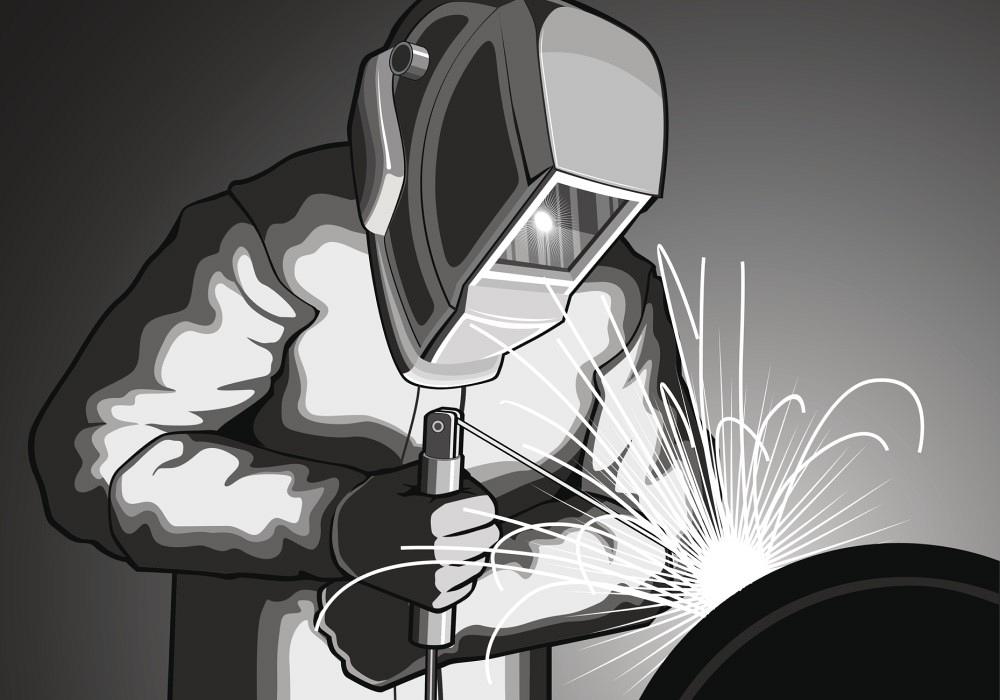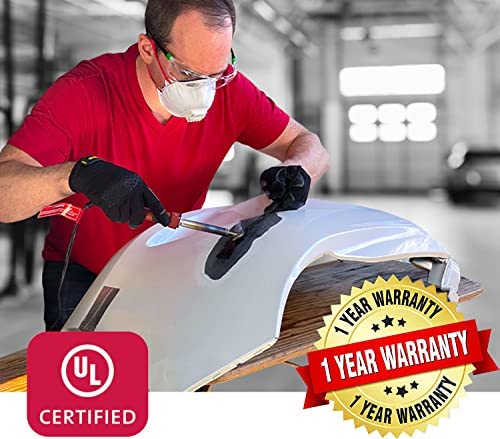All About Welding: Key Insights Into Techniques and Ideal Practices for Success
Welding encompasses a selection of methods, each fit for certain products and applications. Understanding these methods, such as GMAW, SMAW, and TIG, is essential for accomplishing excellent outcomes. Furthermore, the appropriate tools and security practices can not be forgotten. As preparation and repairing play crucial duties in the welding process, understanding these elements can considerably improve the top quality of the end product. What are the vital variables that ensure a successful weld?
Understanding Different Welding Techniques
Welding techniques incorporate a range of approaches, each suited to specific applications and products. Among the most common methods are Gas Steel Arc Welding (GMAW), Protected Metal Arc Welding (SMAW), and Tungsten Inert Gas Welding (TIG) GMAW, also known as MIG welding, is preferred for its speed and flexibility, making it suitable for thin products. SMAW, or stick welding, is preferred for its simplicity and efficiency in outdoor atmospheres, especially with thicker metals. TIG welding supplies precision and control, making it suitable for intricate job and non-ferrous metals (Montana Mobile Welding and Repair Belgrade Welding). Each technique has its one-of-a-kind benefits and considerations, enabling welders to choose the very best approach based upon the project's needs, material kind, and preferred results. Comprehending these strategies is essential for successful welding
Important Welding Tools and Devices
While different welding methods call for details skills, the appropriate equipment and tools are similarly vital for attaining high quality outcomes. Vital welding tools includes welding devices, which differ depending on the strategy-- such as MIG, TIG, or stick welding. Protective equipment, including aprons, handwear covers, and headgears, guarantees safety and convenience throughout the procedure. Furthermore, components and clamps assist secure products in area, guaranteeing accuracy in welds. Consumables like welding poles, cord, and securing gas are additionally vital parts that influence the quality of the weld. In addition, devices such as cutters and grinders promote surface area preparation and post-weld finishing, adding to an expert end result. Buying high-grade devices eventually improves the efficiency and efficiency of welding jobs.
Security Practices in Welding
Proper safety and security practices are necessary in the welding market to shield workers from prospective hazards. Welders need to wear ideal individual protective equipment (PPE), including safety helmets with correct shading, handwear covers, and flame-resistant apparel. Sufficient ventilation is essential to minimize exposure to harmful fumes and gases generated throughout the welding process. In addition, employees should be educated in the right handling of welding devices to stop accidents. Fire precaution, such as keeping combustible materials away from the welding area and having fire extinguishers conveniently available, are required. Normal assessments of devices and workspaces can aid determine potential risks prior to they result in crashes. By adhering to these security methods, welders can develop a much safer working atmosphere and decrease risks connected with their profession.
Preparing Products for Welding
Preparing products for welding is an essential step that greatly influences the high quality and integrity of the end product (Welding). Correct prep work involves cleansing the surfaces to remove impurities such as oil, corrosion, and dirt, which can compromise the weld. Techniques such as grinding, fining sand, or making use of solvents are generally employed to accomplish a clean surface. In addition, ensuring that the materials fit with each other well is crucial; gaps can lead to weak welds. It's additionally crucial to consider the positioning and positioning of the elements, as this will affect the convenience of welding and the last result. Selecting the ideal filler material and making certain compatibility with the base steels is vital for achieving solid, resilient welds.
Tips for Getting High-Quality Welds
Accomplishing premium welds calls for attention to information and adherence to finest techniques throughout the welding procedure. Proper joint prep work is necessary, making sure surfaces are tidy and free from pollutants. Selecting the proper filler product and welding method based upon the base metals is critical for suitable bonding. Maintaining consistent traveling speed and angle while welding can promote and protect against problems harmony. In addition, controlling warm input is vital; too much warmth can cause bending and damaged joints. If required, regularly inspecting the welds during the process allows for prompt adjustments. Finally, employing proper post-weld therapies, such as cleaning and anxiety relief, can boost the durability and integrity of the weld, eventually making certain an effective outcome.
Fixing Usual Welding Issues
Welding frequently provides challenges that can influence the high quality and integrity of the end product. Typical problems such as porosity, inconsistent weld grains, and other overheating can arise, each calling for particular troubleshooting methods. Understanding these issues is important for welders to improve their skills and achieve optimal outcomes.
Porosity Troubles Explained
Porosity can usually be overlooked, it continues to be an important issue in welding that can compromise the integrity of an ended up product. Porosity refers to the visibility of small gas pockets within the weld grain, which can compromise the joint and lead to early failure. This trouble generally emerges from contaminants, wetness, or inappropriate securing gas protection throughout the welding procedure. To mitigate porosity, welders should verify that the base products are clean and dry, use suitable protecting gases, and keep regular welding next parameters. Regularly examining the devices and environment can also assist determine possible concerns before they manifest in the weld. Resolving porosity properly is vital for accomplishing strong, durable welds that meet quality criteria.

Inconsistent Weld Beans
Irregular weld beads can greatly affect the quality and stamina of an ended up product. Various aspects add to this concern, including incorrect travel rate, inaccurate amperage settings, and inconsistent electrode angles. When the welder moves also swiftly, a grain might appear narrow and lack infiltration, while moving too slowly can create too much accumulation. In addition, utilizing the wrong amperage can cause either undercutting or excessive spatter, both of which compromise weld integrity. The welder's method, such as irregular torch motion, can likewise bring about unequal grain appearance. To mitigate these problems, in 1 welder welders must concentrate on keeping stable, controlled activities and making certain proper tools settings to accomplish uniformity in their welds. Uniformity is key to achieving trustworthy and solid welds.
Overheating and Bending Issues
Excessive warm throughout the welding procedure can cause significant getting too hot and deforming issues, impacting the structural integrity of the workpiece. These troubles frequently manifest as distortion, which can compromise positioning and fit-up, making additional setting up challenging. Aspects adding to overheating include the selection of welding specifications, such as voltage and take a trip rate, along with the type of material being bonded. To mitigate these issues, welders should keep consistent travel speed and suitable warmth input while monitoring the work surface temperature level. In addition, preheating or post-weld warmth treatment can aid reduce tensions created by rapid cooling - Fabrication. Regular inspection and adherence to ideal methods are necessary in avoiding getting too hot and guaranteeing the long life and reliability of bonded structures
Regularly Asked Questions
What Are the Job Opportunities in the Welding Market?
The welding market uses varied profession opportunities, consisting of positions as welders, inspectors, educators, and engineers. Specialists can function in production, building and construction, aerospace, and automobile fields, benefiting from solid need and affordable wages in different functions.
Exactly How Can I Enhance My Welding Rate Without Sacrificing Quality?
To boost welding rate without sacrificing quality, one must practice reliable techniques, preserve tools, maximize setups, and improve hand-eye control. Routine training and seeking comments can also considerably add to achieving faster, high-grade welds.
What Accreditations Are Offered for Welders?
Many accreditations exist for welders, including those from the American Welding Society (AWS), the National Center for Building Education And Learning and Study (NCCER), and different industry-specific organizations. These credentials enhance employability and demonstrate ability proficiency.
Exactly How Does Welding Affect the Features of Metals?
Welding affects the residential properties of steels by altering their microstructure, which can cause modifications in stamina, hardness, and ductility. Heat input and air conditioning rates throughout the procedure significantly influence these material attributes.
Can I Bonded Dissimilar Metals Together?

Comments on “Montana Mobile Welding and Repair Welding shares insight on addressing heat distortion effectively”